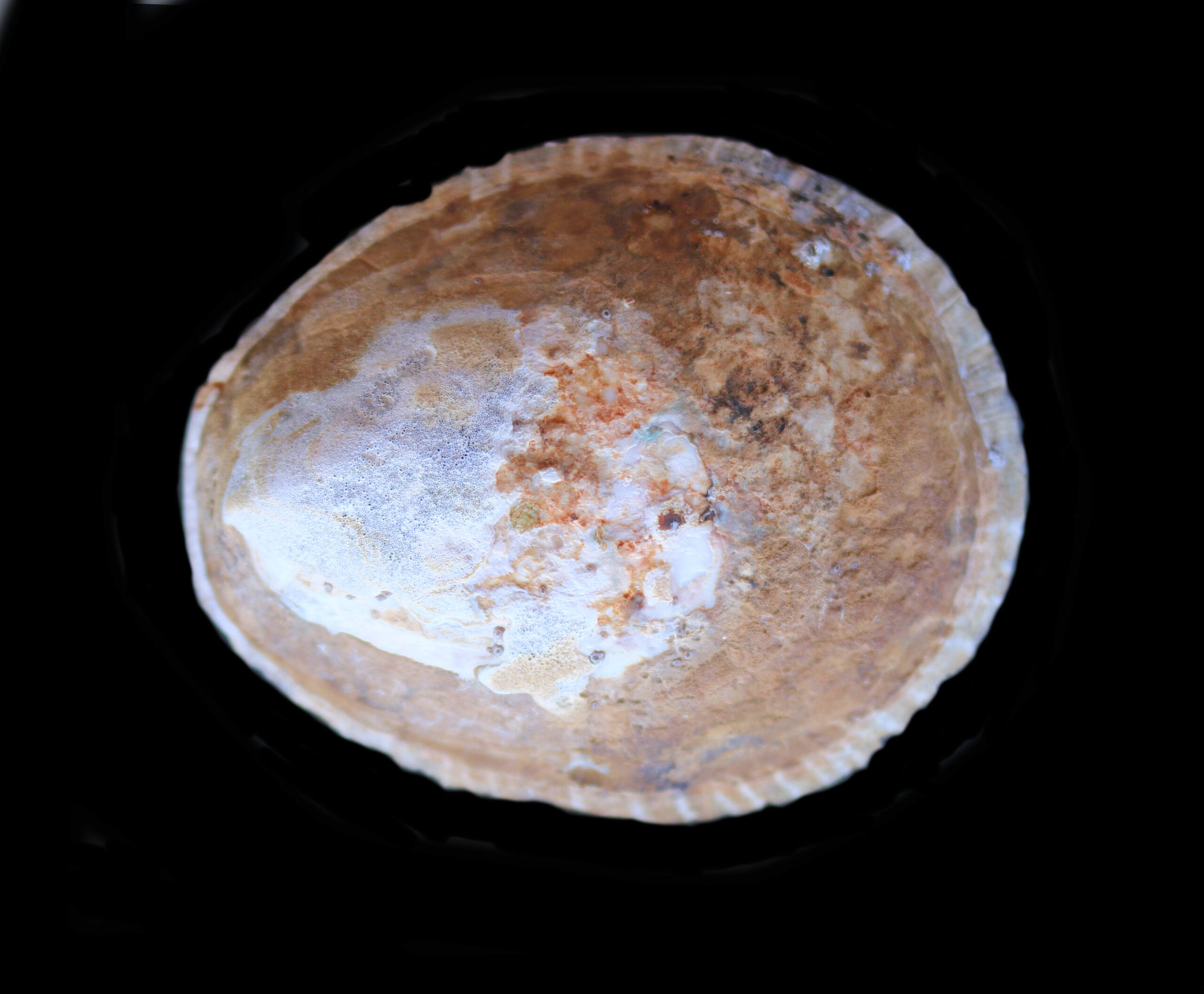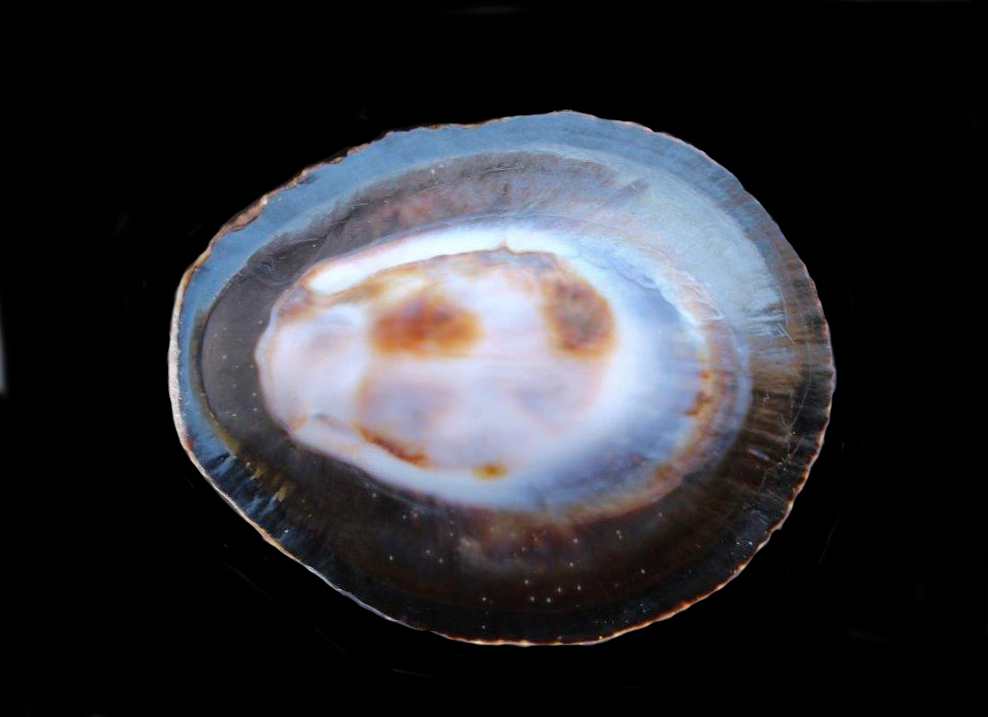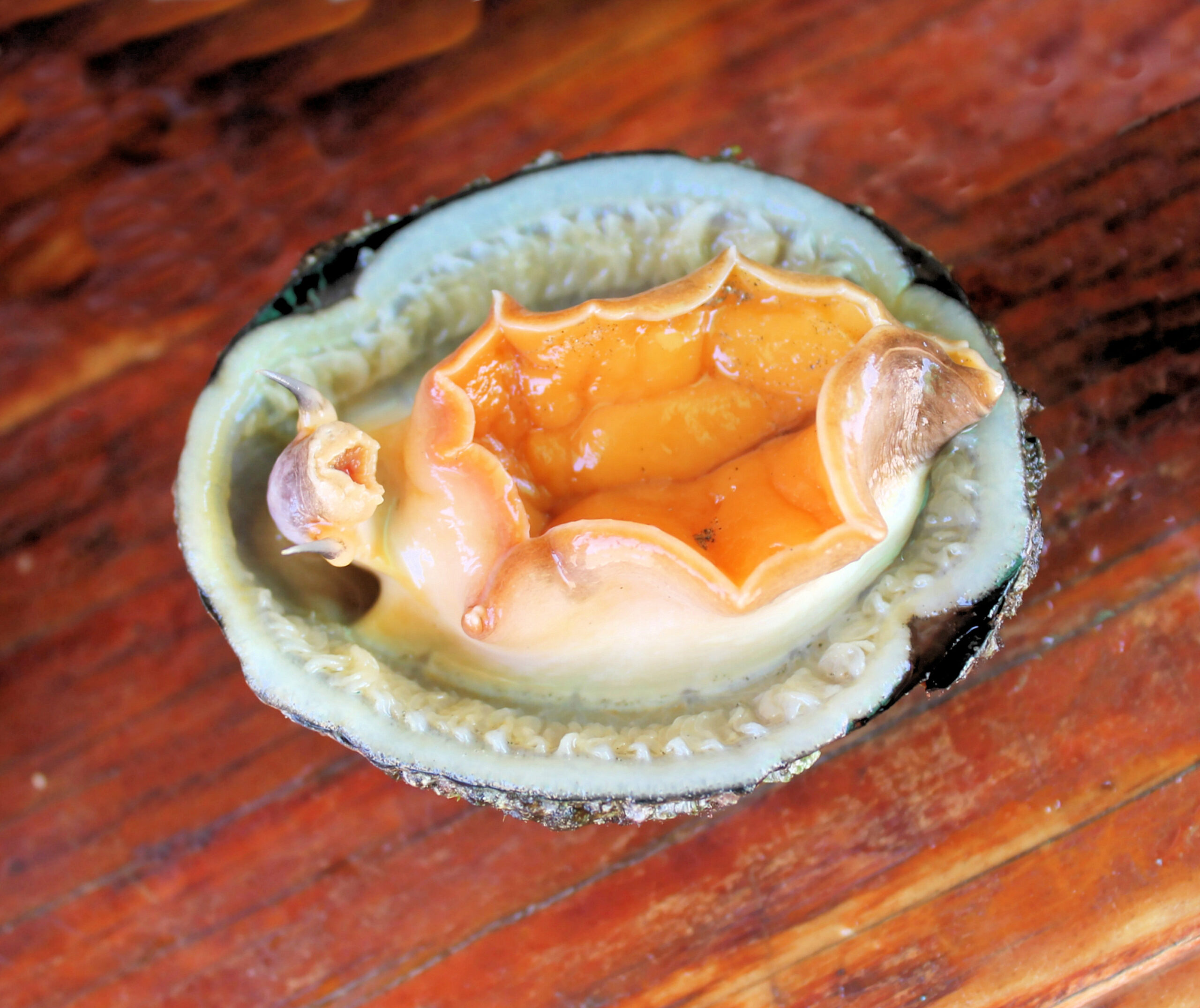Owl Limpet Shell, Lottia gigantea


 Owl Limpet Shell, Lottia gigantea. Shell collected off the beach in the greater Agua Verde area, Baja California Sur, April 2018. Size: 8.0 cm (3.1 inches) x 6.0 cm (2.4 inches). Collection and photographs courtesy of Barry Mastro, Escondido, California.
Owl Limpet Shell, Lottia gigantea. Shell collected off the beach in the greater Agua Verde area, Baja California Sur, April 2018. Size: 8.0 cm (3.1 inches) x 6.0 cm (2.4 inches). Collection and photographs courtesy of Barry Mastro, Escondido, California.
The Owl Limpet, Lottia gigantea (G.B. Sowerby I, 1834), is a gastropod mollusk that is a member of the Fissurellidae Family of Keyhole Limpets. They are also known at the Giant Owl Limpet. The shell is large with an oval profile that has a low frequently eroded apex at the anterior end and a rough exterior surface. The exterior of the shell is mottled brown and whitish in color, with the brown areas raised over the lighter areas which are often in a radial pattern, most apparent toward the margin; the interior is glossy with a bluish center with some shells have brown blotches and a black margin. The outline of the bluish center resembles the outline of a Great Horned Owl, giving rise to its common name. Owl Limpets aggressively defend their grazing territory from other shell species. They use their mass to shove other species away or they clamp their shell down via the foot of other snails causing the withdrawal of the foot, loss of suction and subsequently to being swept away by wave action. Owl Limpet Shells reach a maximum of 12.1 cm (4.8 inches) in length and 9.1 cm (3.6 inches) in height.
Owl Limpets are found attached to wave-swept rocks in the upper intertidal zone and they are often associated with mussel beds. They range from Washington State to San Ignacio Lagoon, Baja California Sur. This species has not been documented in the Sea of Cortez.